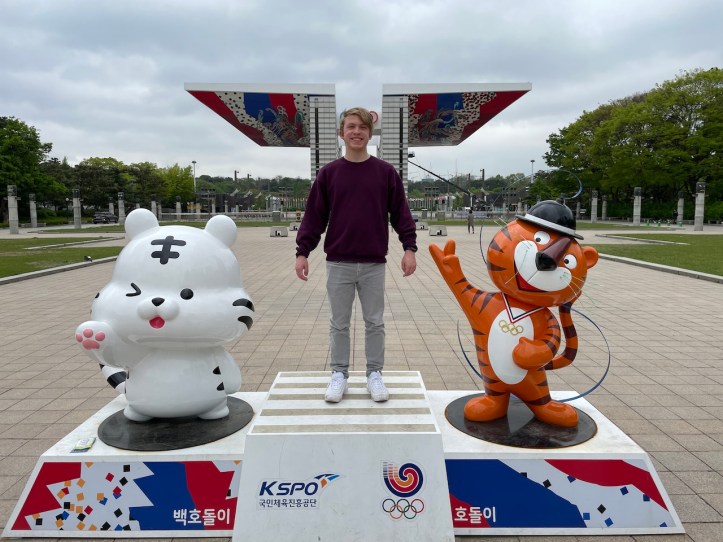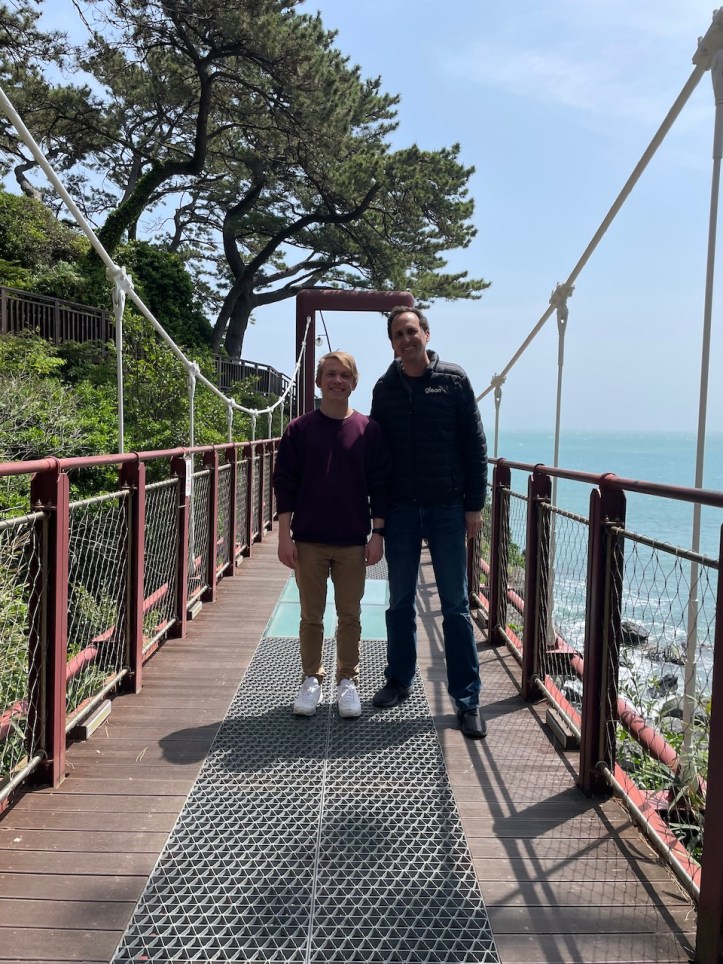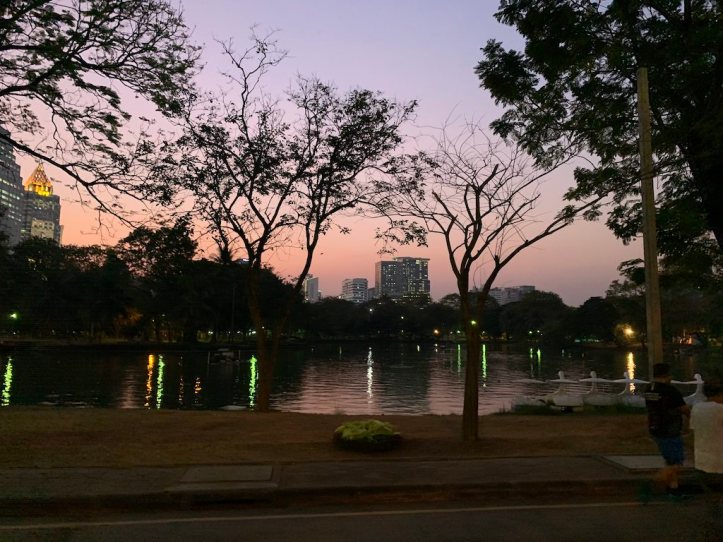On our first full day in Seoul, we consulted our guidebooks and decided to focus on Gyeongbokgung Palace and Bukchon Hanok Village in the historic core. We also spent time in the Insadong shopping area which is on the way back to where we stayed in Myeongdong.
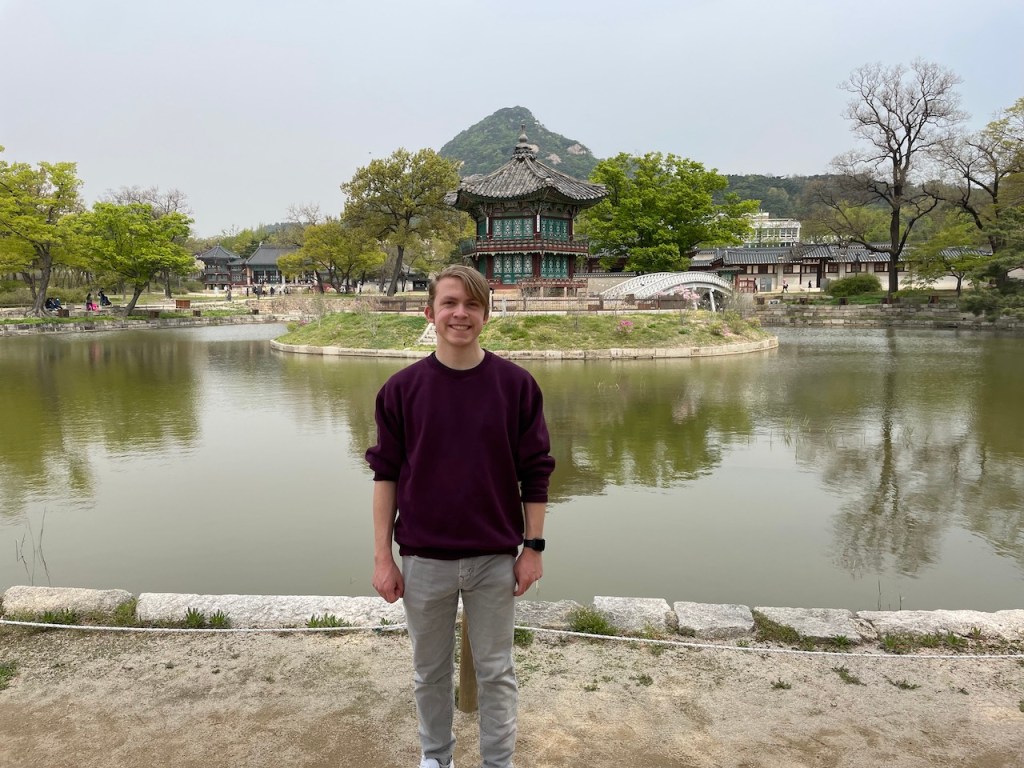
With a 13 hour time change, our strategy for avoiding severe jet-lag is to try to do many outdoor activities in the sunlight to try to stay awake. Outdoor palaces and shopping areas seem to fit this well. Since it was a Monday, the other major palace, Changgyeonggung, was closed, which made choosing palaces easy.
A Walk from Myeongdong to Gyeongbokgung Palace
Breakfast
To our surprise, we managed to sleep until 8:30am. Ready to explore our neighborhood, we went out to find breakfast. While we thought about trying to find something more Korean, James was jet-lagged and wanted something familiar, so he pointed to the McDonalds around the corner from our hotel.

We do usually try to visit the Golden Arches at least once in a given country. In this case, we learned that dine-in restaurants in Korea are not allowed to use disposable cups and silverware, so this was our first time ever drinking McDonald’s coffee out of a ceramic mug and using real metal McDonalds silverware to eat our breakfast!
Seoul City Hall
We then started our walk towards Gyeongbokgung Palace. It’s not too far from Myeongdong to walk, though I imagine transit/taxis are possible. Along the way, we saw Seoul City Hall from the outside. To complete our “American restaurant” checkboxes, James got Starbucks along the way as well.

Gwanghwamun Plaza
Getting closer to the Gyeongbokgung Palace, we entered Gwanghwamun Plaza and were greeted by the statue of Admiral Yi Sun-Sin. Apparently he was an undefeated naval admiral who is most famous for his accomplishments during the Imjin War, which was the Japanese invasion of Korea that lasted from 1592-1598.

Next, we came to the statue of King Sejong the Great, the fourth king of the Joseon Dynasty who reigned from 1418 to 1450. He is most famous for his invention of the Korean alphabet, Hangul. Apparently, he was frustrated with how difficult Chinese characters were to learn, so he created a writing system for Korean that “a wise man can learn in a morning; even an unwise man can learn it in 10 days.”

Gyeongbokgung Palace
Gwanghwamun Gate
Upon arrival to the Gyeongbokgung Palace, we were greeted with the sight of the Gwanghwamun Gate. While it was originally built in 1395, it has gone through many renovations and rebuilds due to damage from the Imjin War and Korean War, as well as other issues during the Japanese occupation.
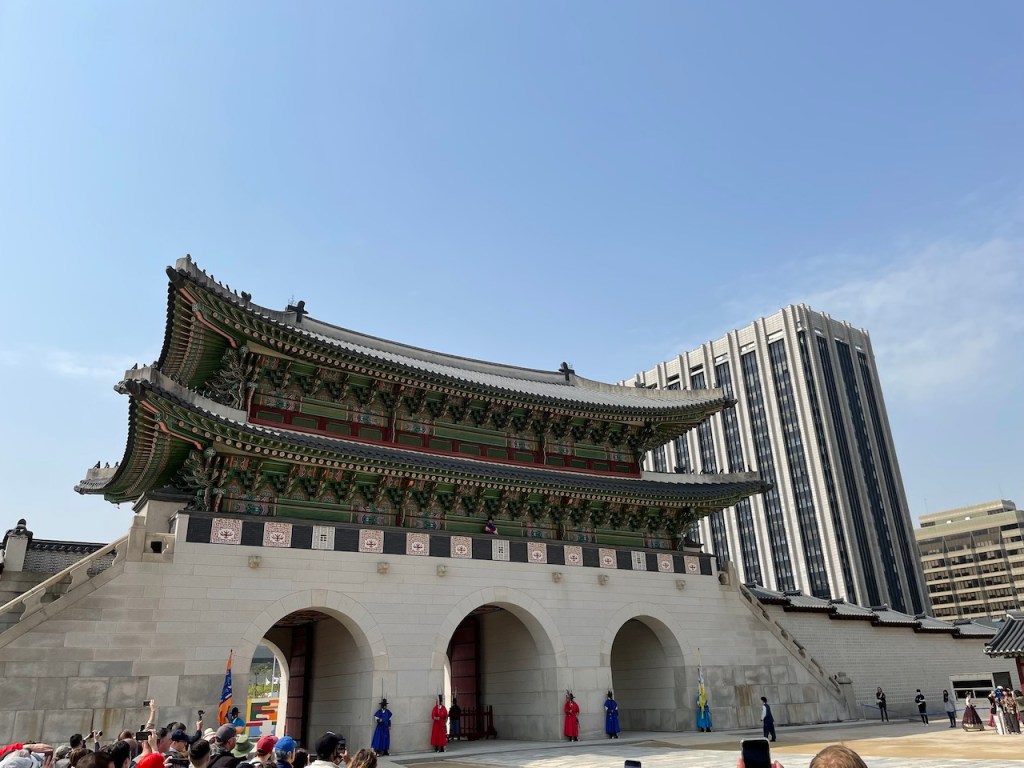
Changing of the Guard Ceremony
After passing through the gate, we were just in time for the Changing of the Guards.

At time of writing, the ceremony occurred twice per day, at 10am and 2pm, so we were fortunate to arrive at the correct time. It seemed to last about 15 minutes.

The uniforms were interesting to look at, and they marched with drums in the background, and at times played horn-like instruments.

Geunjeongjeon Hall
Inside the palace, we wandered around a bit and enjoyed the different buildings. Geunjeongjeon Hall is the main throne room of the palace.
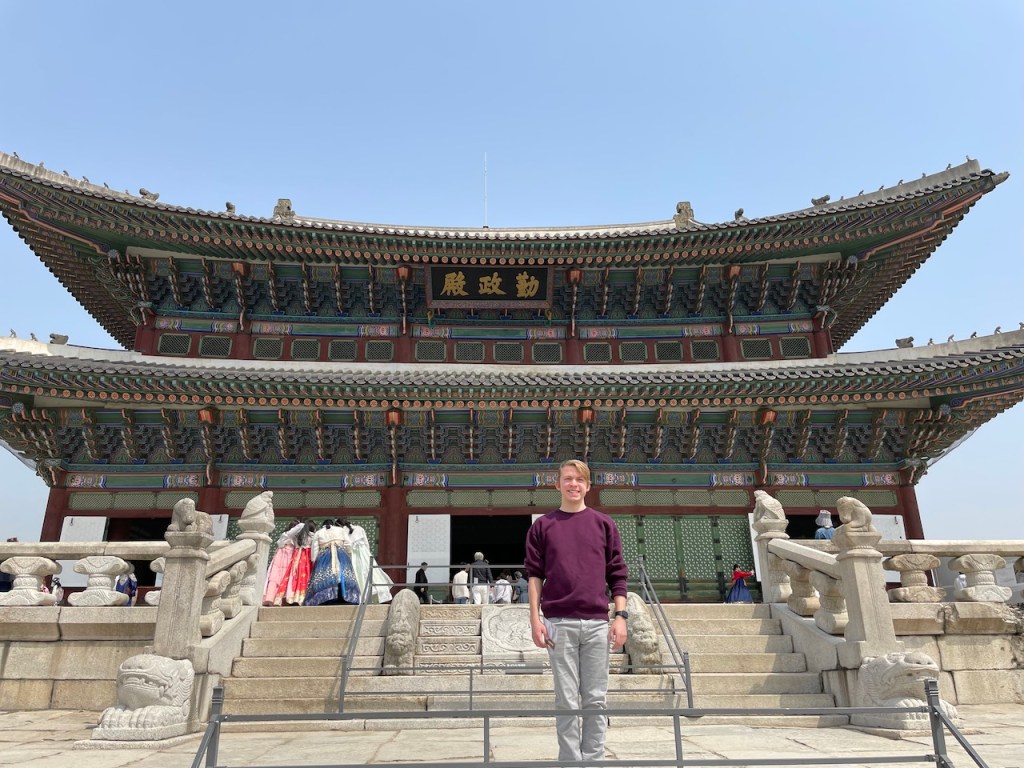
Here is a picture of the interior:

The views from this building were quite nice! One thing we saw was many people wearing traditional Korean robes and having themselves photographed on the palace grounds – you can see some of this in the photo below.
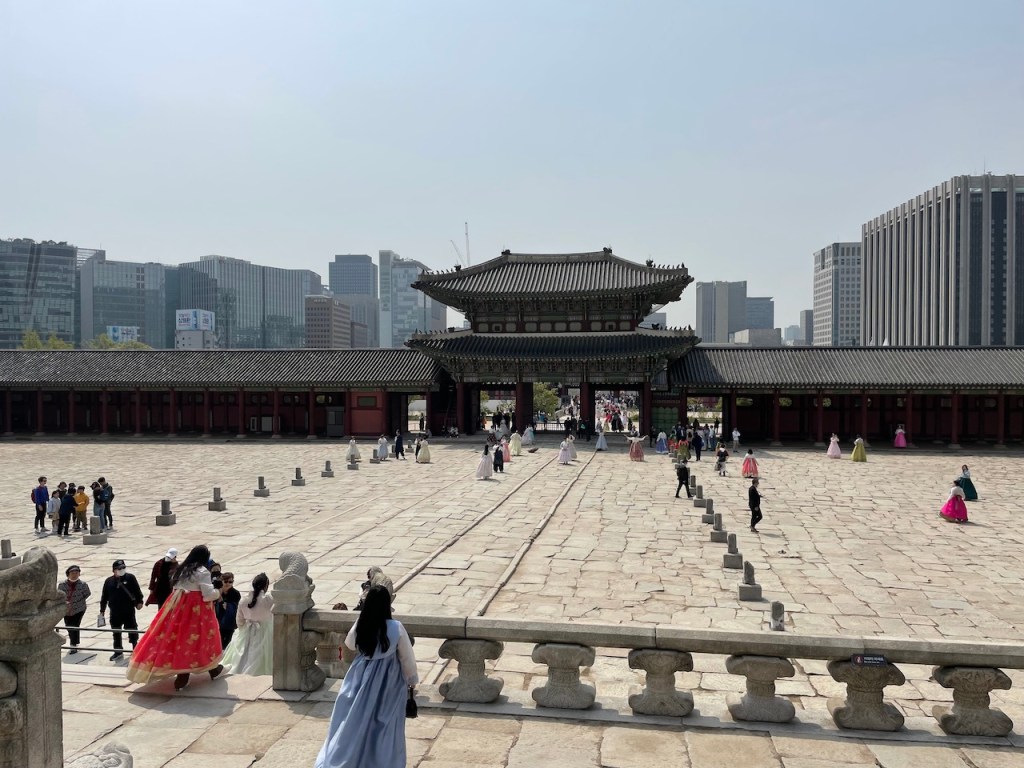
Gyeonghoeru Pavilion
The Gyeonghoeru Pavilion is located on a beautiful pond and was used for entertaining visitors.

More Wandering
We spent some time wandering by the water and soaking up the atmosphere.

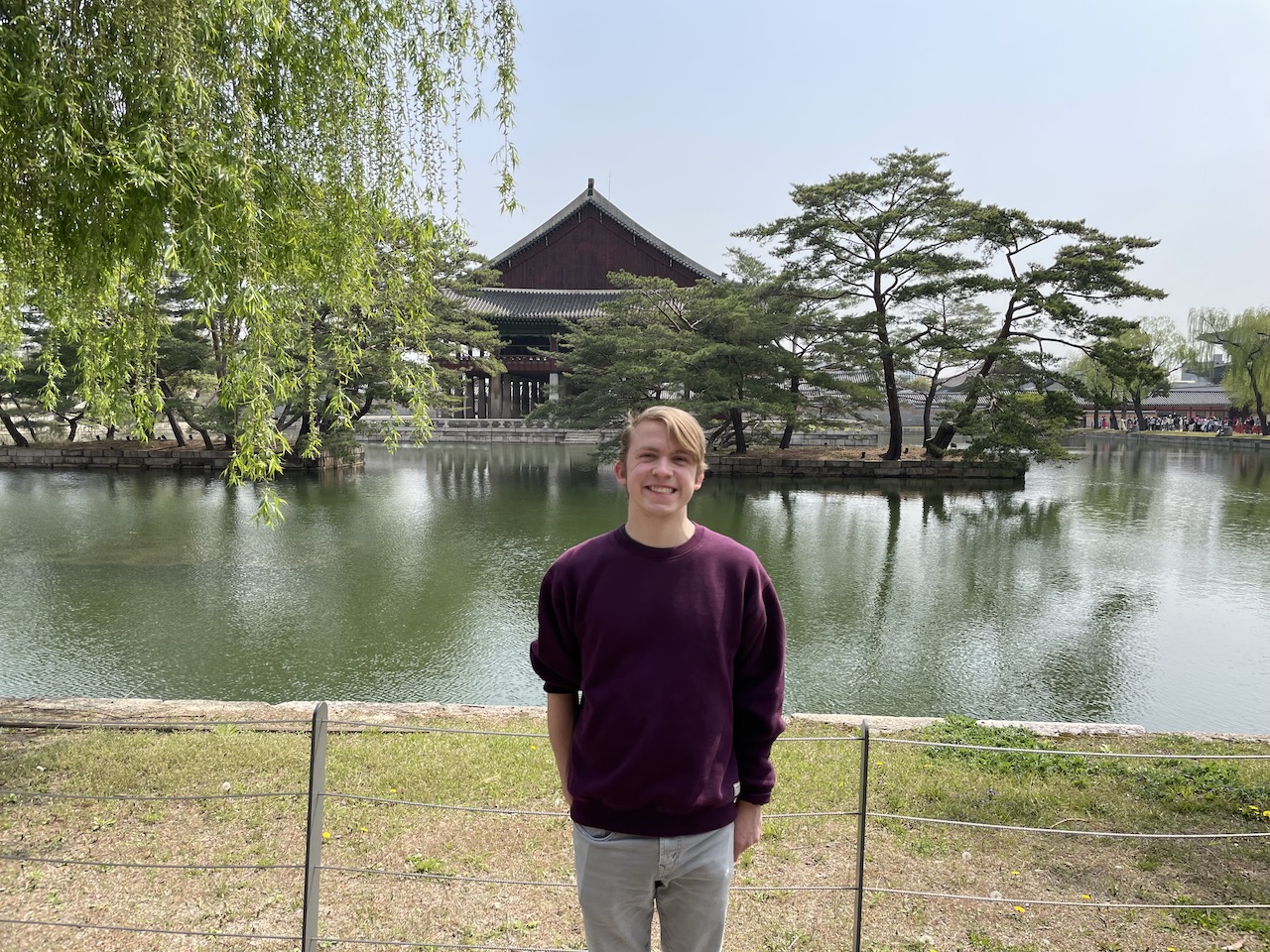

And we saw the entrances (but couldn’t enter) of other buildings.
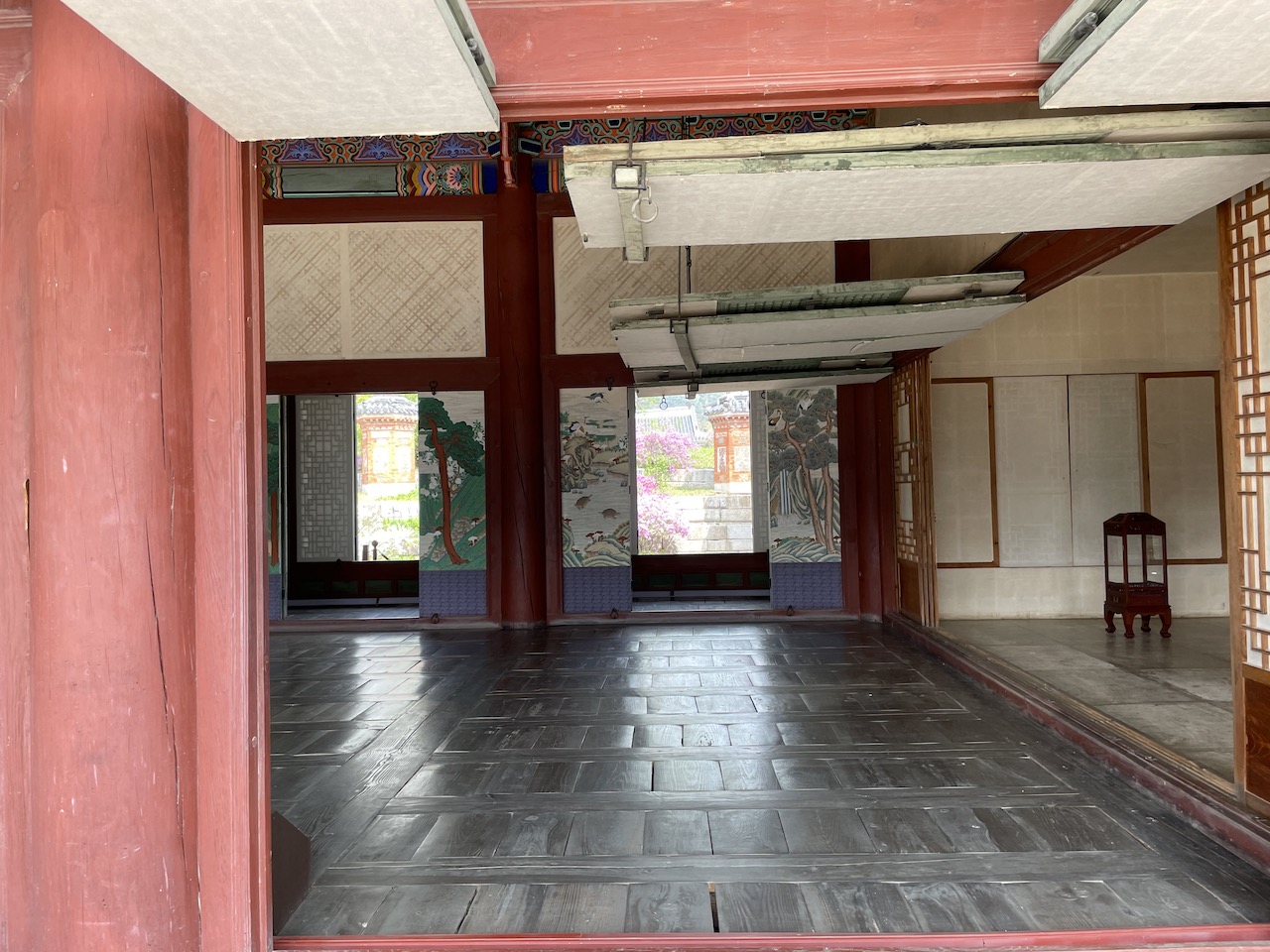
Museums on Site
There are two museums in the palace grounds. Ordinarily, we woulds have visited the National Palace Museum of Korea inside the grounds, but this was closed on Mondays.
Fortunately, the National Folk Museum of Korea was open, so we popped in for a few minutes.

It was interesting to see what the traditional life of the Korean people might have looked like.
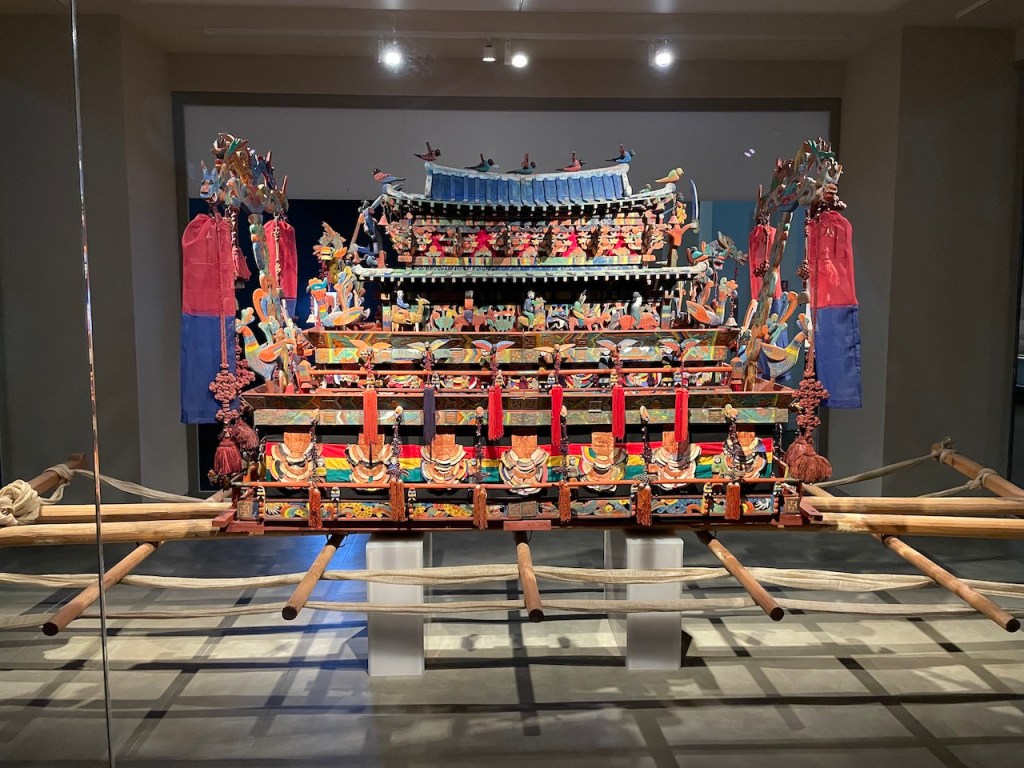
Finishing Up
Feeling hungry for lunch, we decided to wrap things up and head out.

Make sure you admire the views of the city on your way out!

Bukchon Hanok Village
In the area between the east exit of the palace and the Bukchon Hanok Village, we should have gotten some lunch, since we were hungry. We did get some on the other side of the village, but be aware that the Bukchon village is mostly residential.

This village is made up of traditional Korean homes, called Hanok. While this is an actual neighborhood with people making their homes here, many of these houses also serve as a cultural center that allows guests to experience traditional Korean culture in the form of guesthouses, restaurants, tea houses, and more. Being a Monday, there were no tours being offered, so we simply explored the streets on our own.

If you are interested in renting traditional Korean clothing, Hanbok, there are quite a few shops that will provide this service. As a bonus, if you wear these clothes to the Gyeongbokgung Palace, you will get free entry and save yourself about $3. That said, the cost of the rentals are much more than this, so while you will have fun, you won’t come out ahead.

Insadong
Lunch
Having explored some, we did find a nice place for lunch. Food in Korea was both good and seemed to be quite a good value. We had several tasty meals that were much less than they would have been in America.
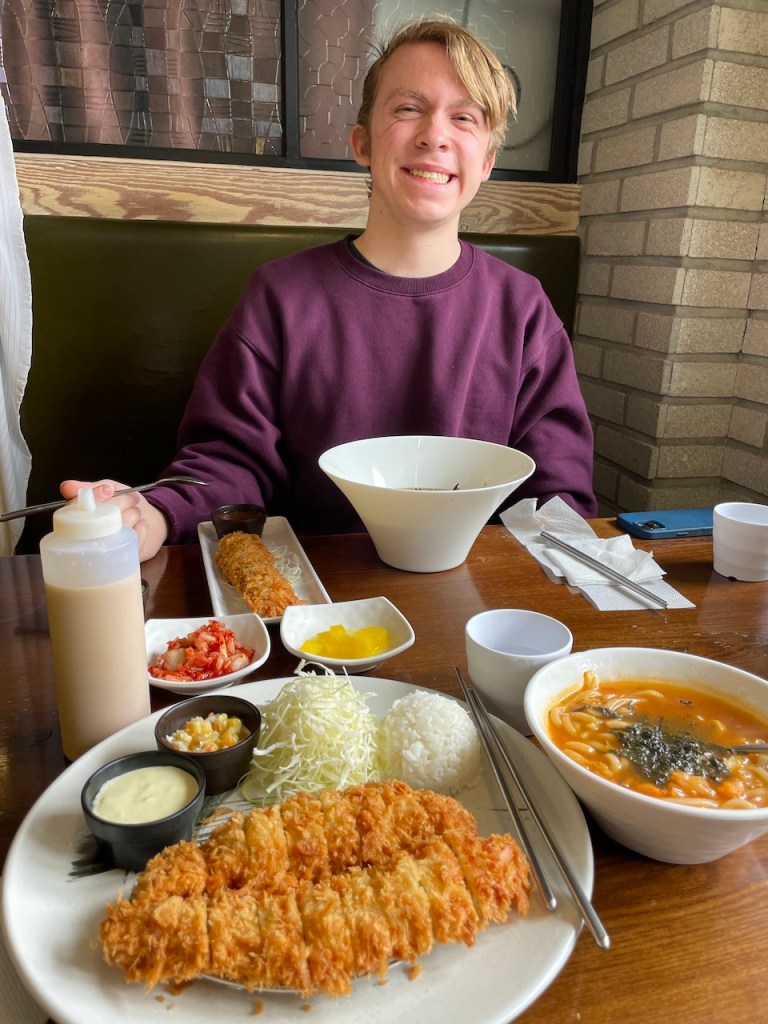
Insadong Street
Eventually, we made it to Insadong Street. Being a Monday afternoon, it was fairly quiet. We did end up coming here again on a Saturday and found it to be much more lively.
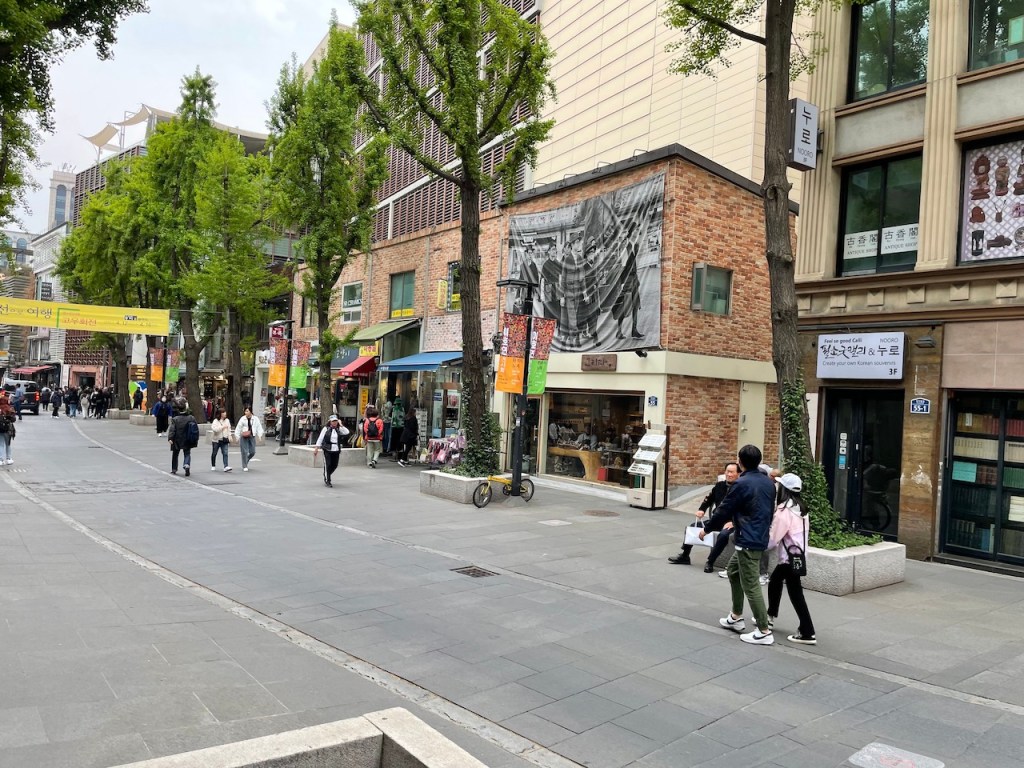
If you are looking for a traditional Korean feel with art galleries, restaurants, tea houses, don’t skip this area of town.
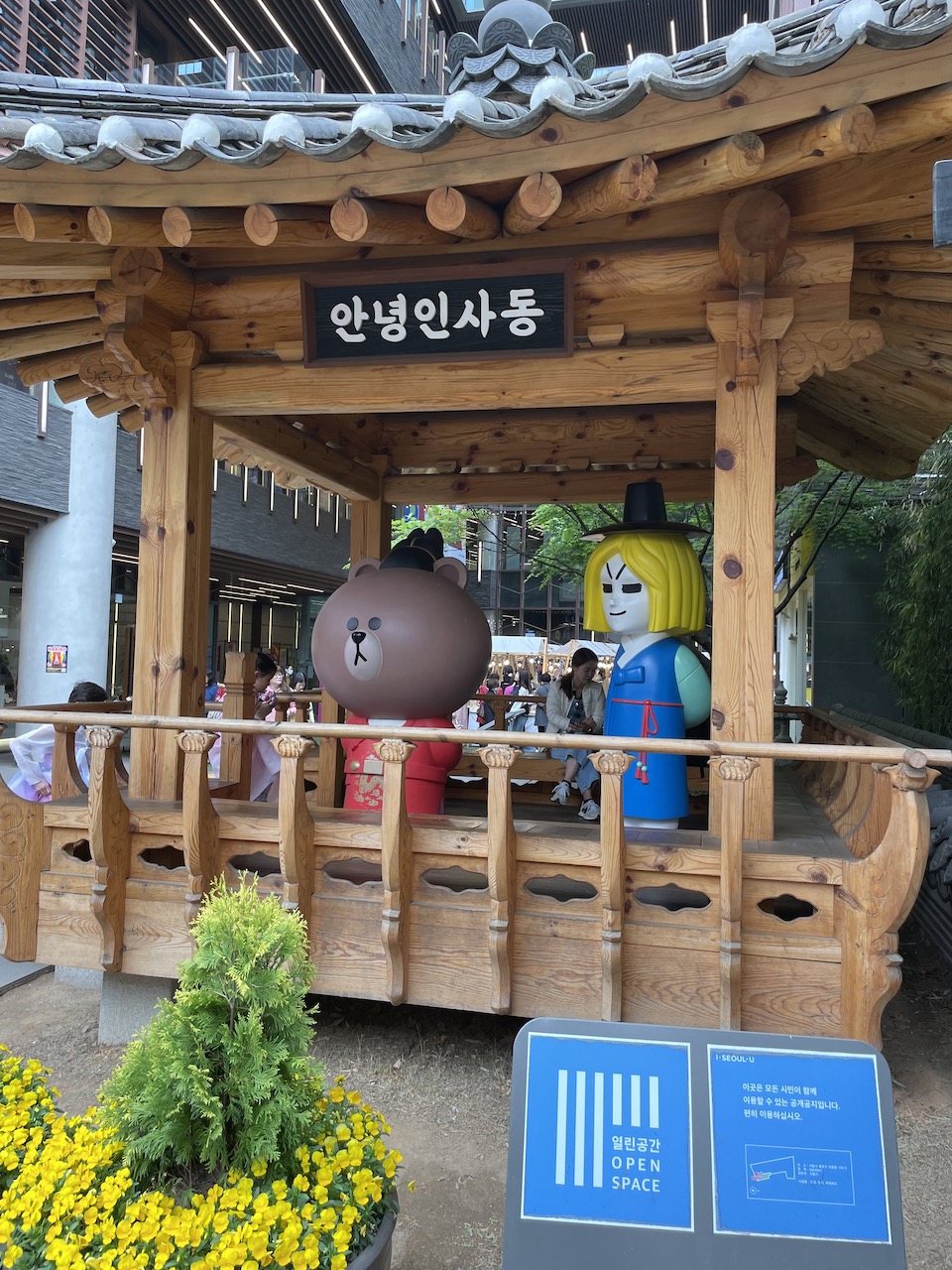
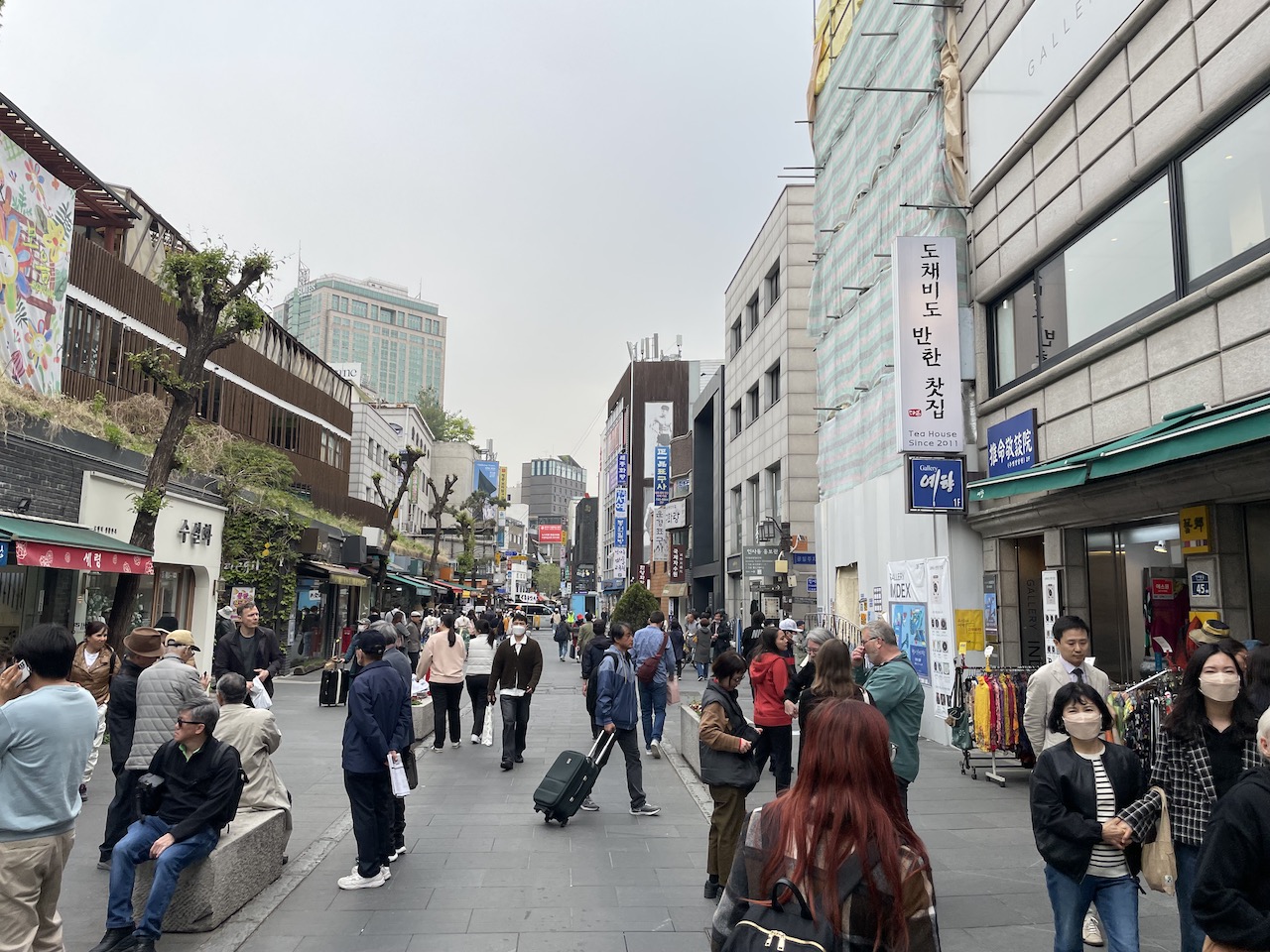

Tapgol Park
On the tail end of Insadong, we approached Tapgol Park and found quite a few Korean senior citizens playing board games by the park. When we came back on Saturday, there were more families and younger folks around.
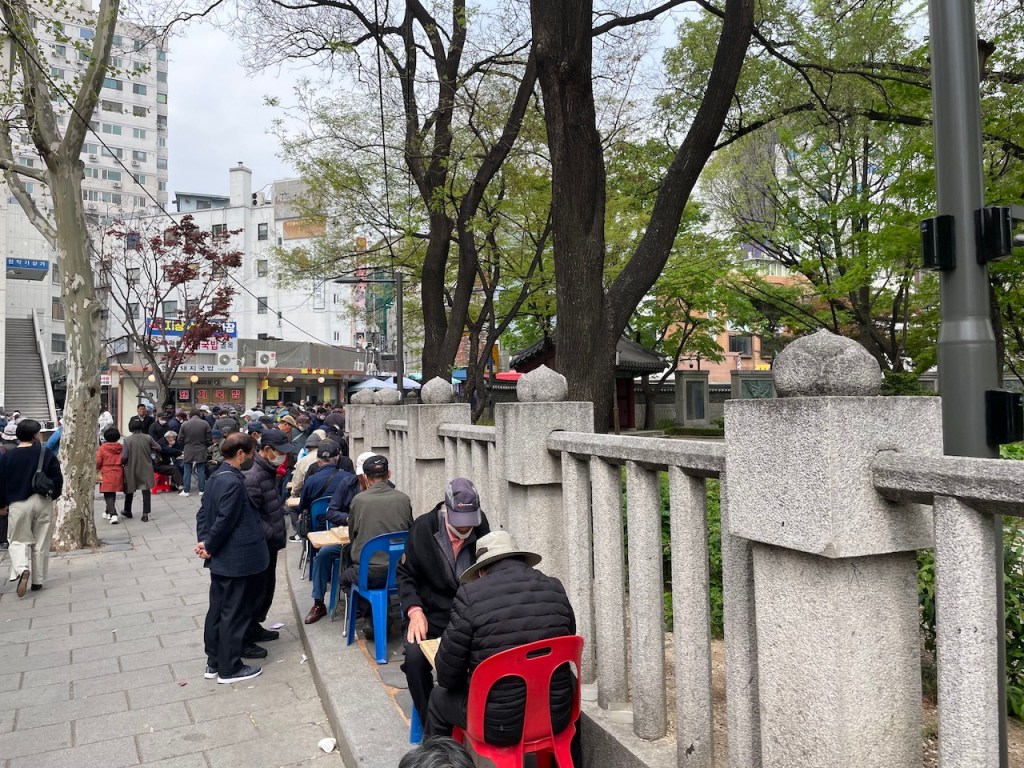
Parks always provide a nice respite from exploring the city.
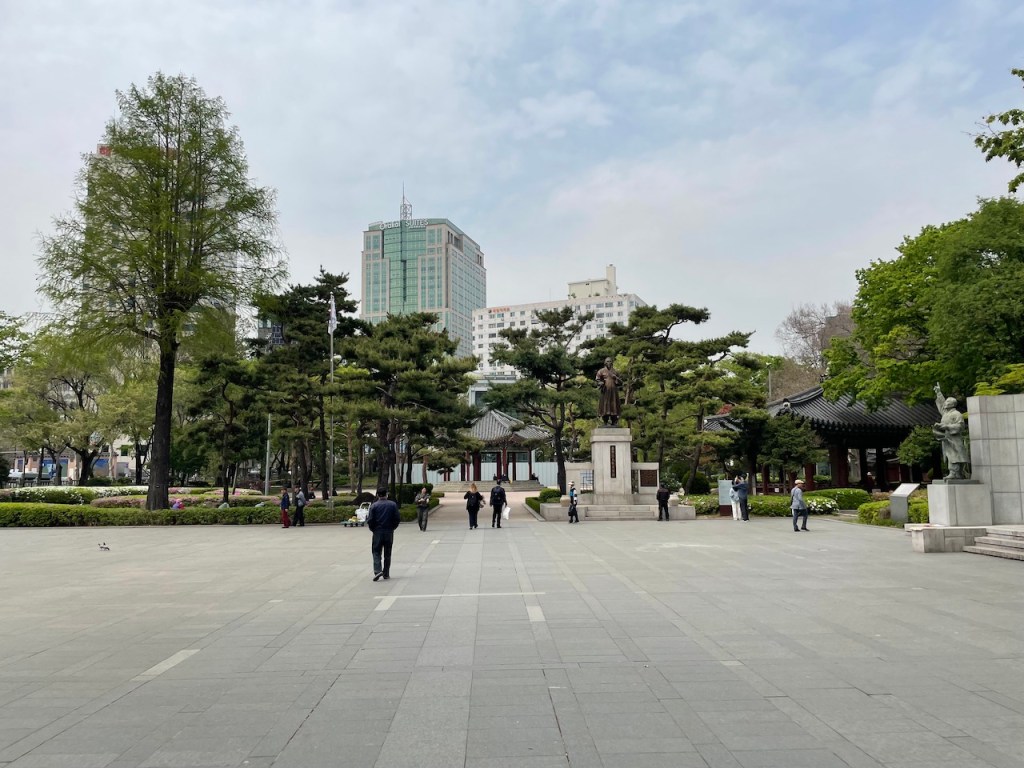
When the boys were younger, parks were often a source of playgrounds, but now that the boys are older, sometimes we still sit on the bench.
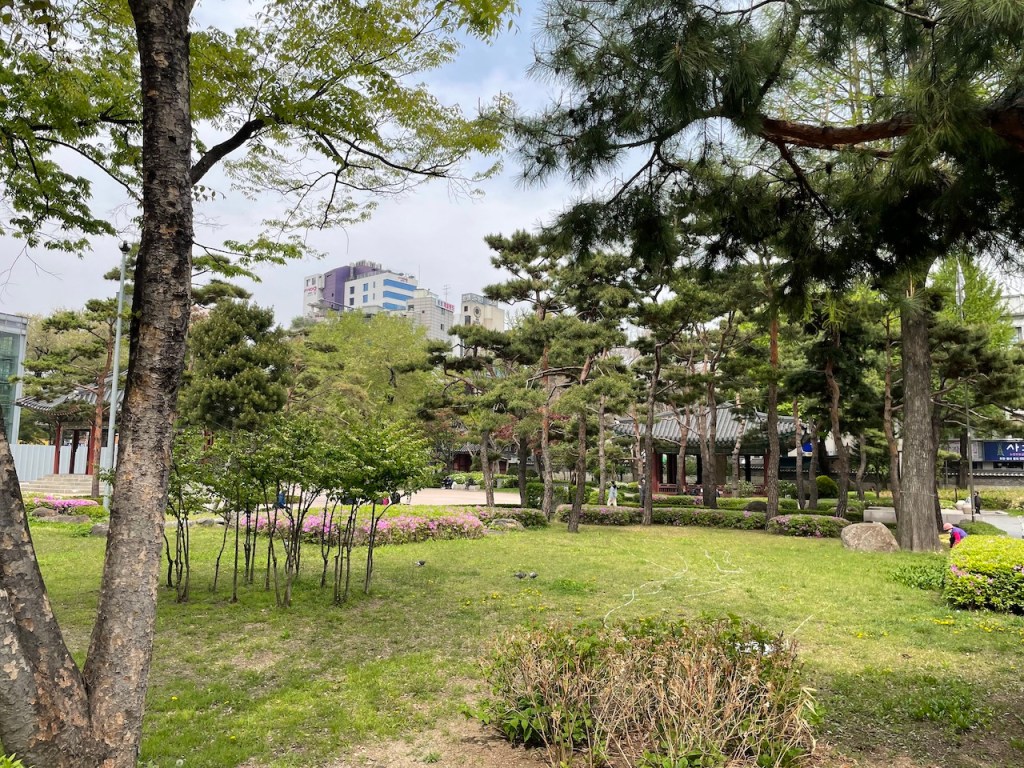
Eventually, we came to the statue of Euiam Son Byeong-hui, a religious leader and activist in the late 1800s and early 1900s.

Cheonggyecheon Stream
Our wandering continued until we made it back to Cheonggyecheon Stream, a nice pedestrian area which we had visited the night before.

Myeongdong Cathedral
From here, we wandered the Myeongdong neighborhood where we were staying – it can be quite different mid-day vs the evening! We stopped by the Myeongdong Cathedral, a Catholic cathedral that is the seat of the Archbishop of Seoul. Unlike many of the cathedrals in Europe we’ve visited, this one didn’t have the (sometimes in Europe) circus-like atmosphere of folks taking photos, but rather mostly locals praying, which was a nice difference.

Namdeamun Market
At this point, we were trying to stay up, and were not so far from Namdeamun Market, so we walked over there. That said, we were too tired and probably should have saved this for a future day.
Myeongdong Night Market
Heading back to our hotel, we also walked through the Myeongdong Market and had some delicious street food for dinner.

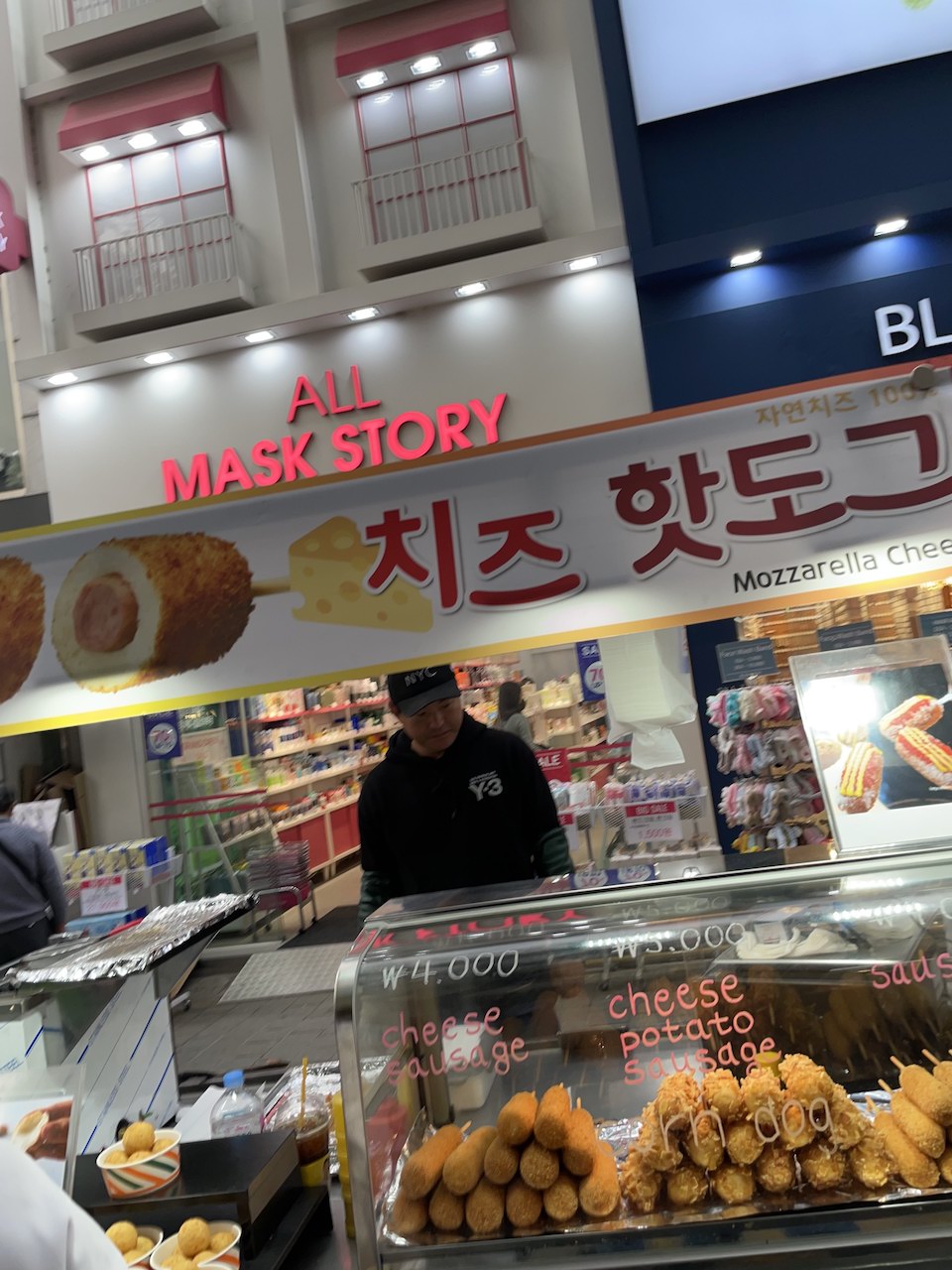

What a fun, but exhausting day!
More From Adventures of the 4JLs
Keep reading our travel blog for more adventures in Korea:



